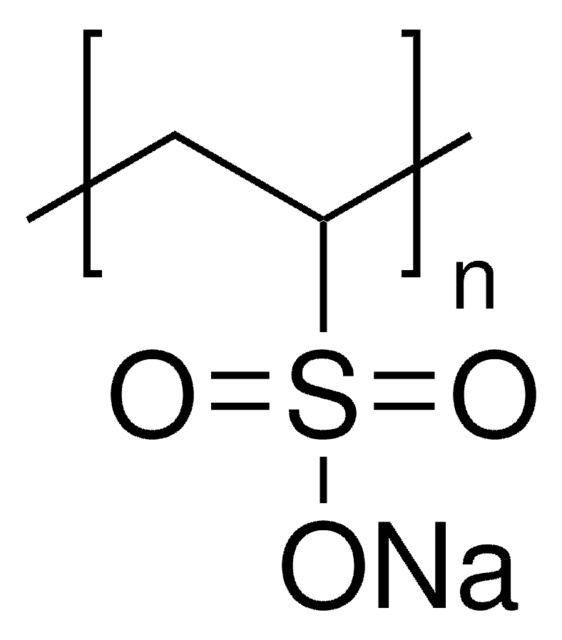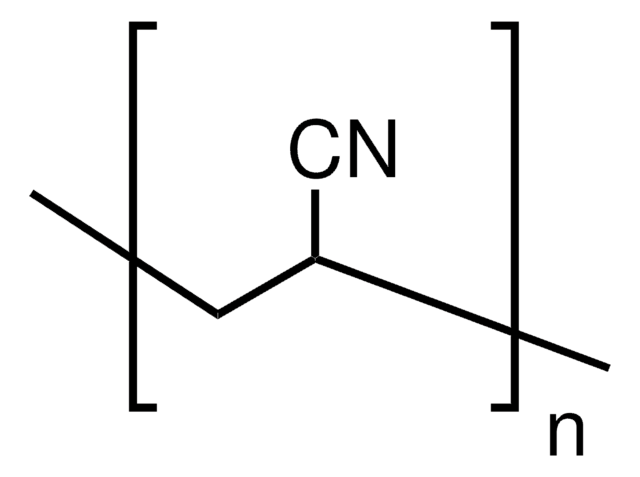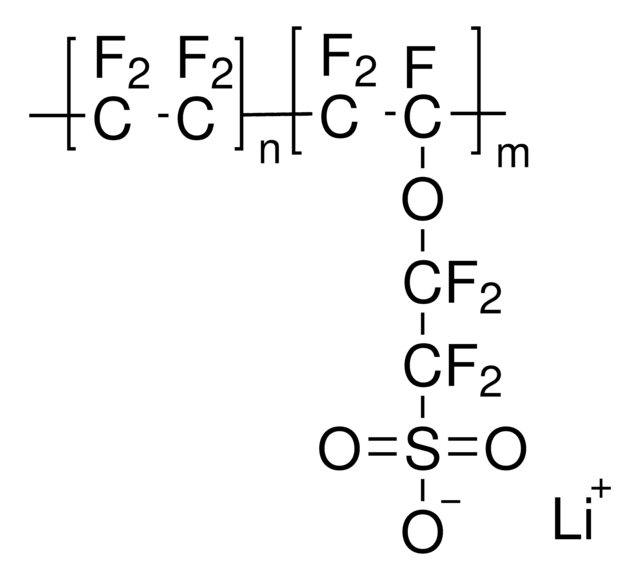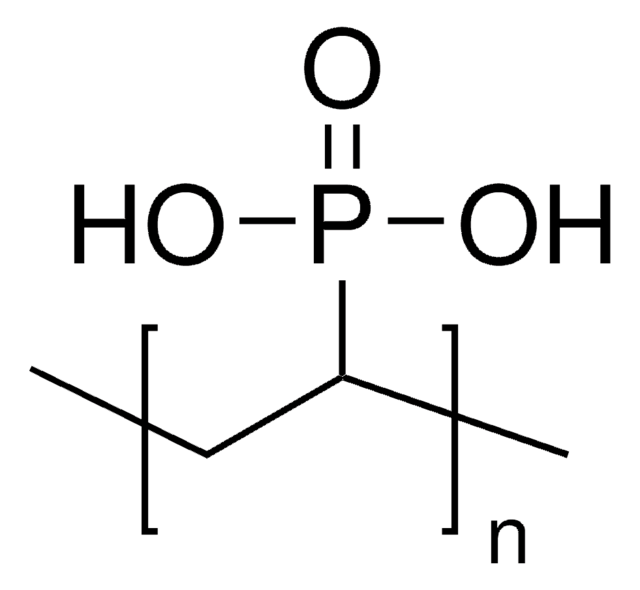939722
Sulfonated polysulfone

proton conducting polymer, degree of sulfonation 70%
Synonym(s):
Sulfonated aromatic polymer for fuel cells and PEMs, Sulfonated poly(arylene ether sulfone) ionomer
About This Item
Recommended Products
description
degree of sulfonation: 60-90%
Quality Level
form
powder
mol wt
20-80 kDa
color
white to beige
mp
>300 °C
functional group
sulfonic acid
polymer architecture
shape: linear
InChI
1S/C12H8F2O8S3.C12H8F2O2S.C12H10O2.2Na/c13-9-3-1-7(5-11(9)24(17,18)19)23(15,16)8-2-4-10(14)12(6-8)25(20,21)22;13-9-1-5-11(6-2-9)17(15,16)12-7-3-10(14)4-8-12;13-11-5-1-9(2-6-11)10-3-7-12(14)8-4-10;;/h1-6H,(H,17,18,19)(H,20,21,22);1-8H;1-8,13-14H;;
InChI key
MSKVMJLWNYCWLA-UHFFFAOYSA-N
General description
Application
Moreover, sulfonated aromatic polymers are employed in water treatment membranes for processes like reverse osmosis, nanofiltration, and ultrafiltration. Their chemical resistance allows them to withstand harsh environments while maintaining high water permeability, effectively separating and purifying water. These polymers are also explored for their potential in gas separation membranes, where they can selectively separate gases for various industrial processes. Continued research and development in this area promise further advancements and innovations in fuel cells, energy storage, water treatment, and gas separation.
Related product
Storage Class
11 - Combustible Solids
flash_point_f
Not applicable
flash_point_c
Not applicable
Choose from one of the most recent versions:
Certificates of Analysis (COA)
Sorry, we don't have COAs for this product available online at this time.
If you need assistance, please contact Customer Support.
Already Own This Product?
Find documentation for the products that you have recently purchased in the Document Library.
Our team of scientists has experience in all areas of research including Life Science, Material Science, Chemical Synthesis, Chromatography, Analytical and many others.
Contact Technical Service








